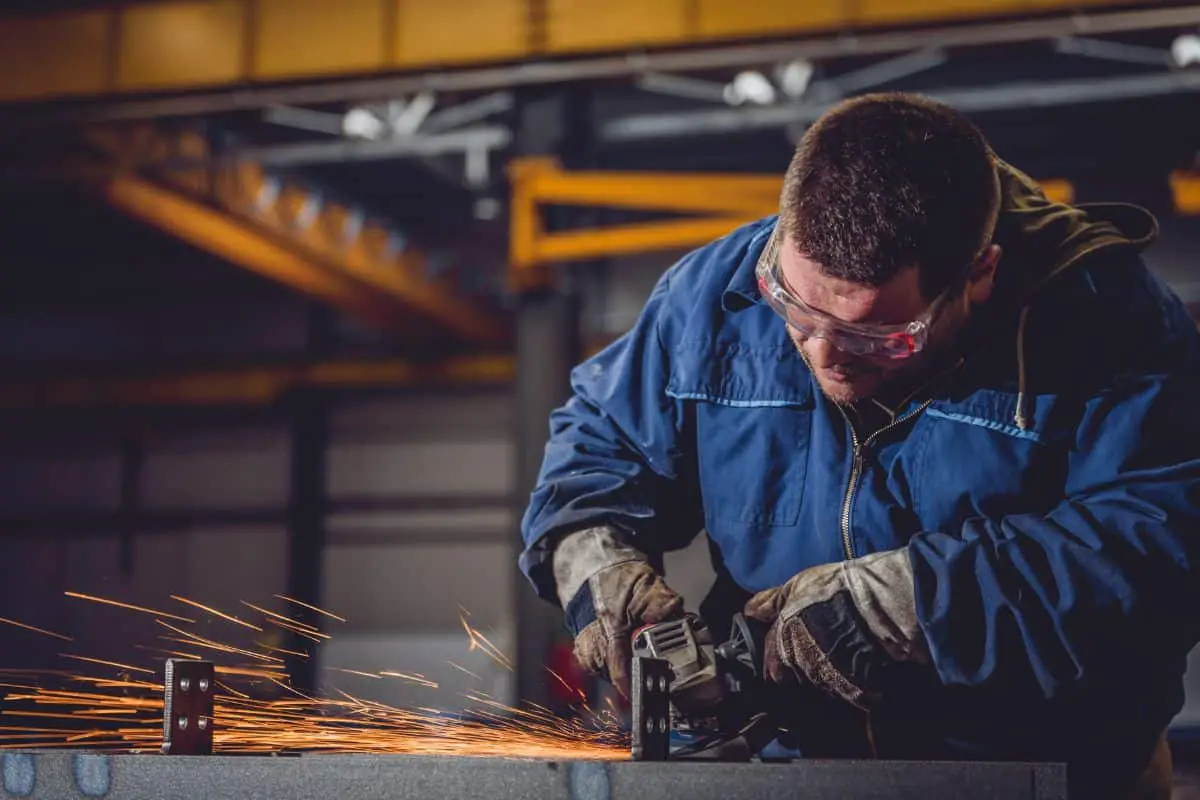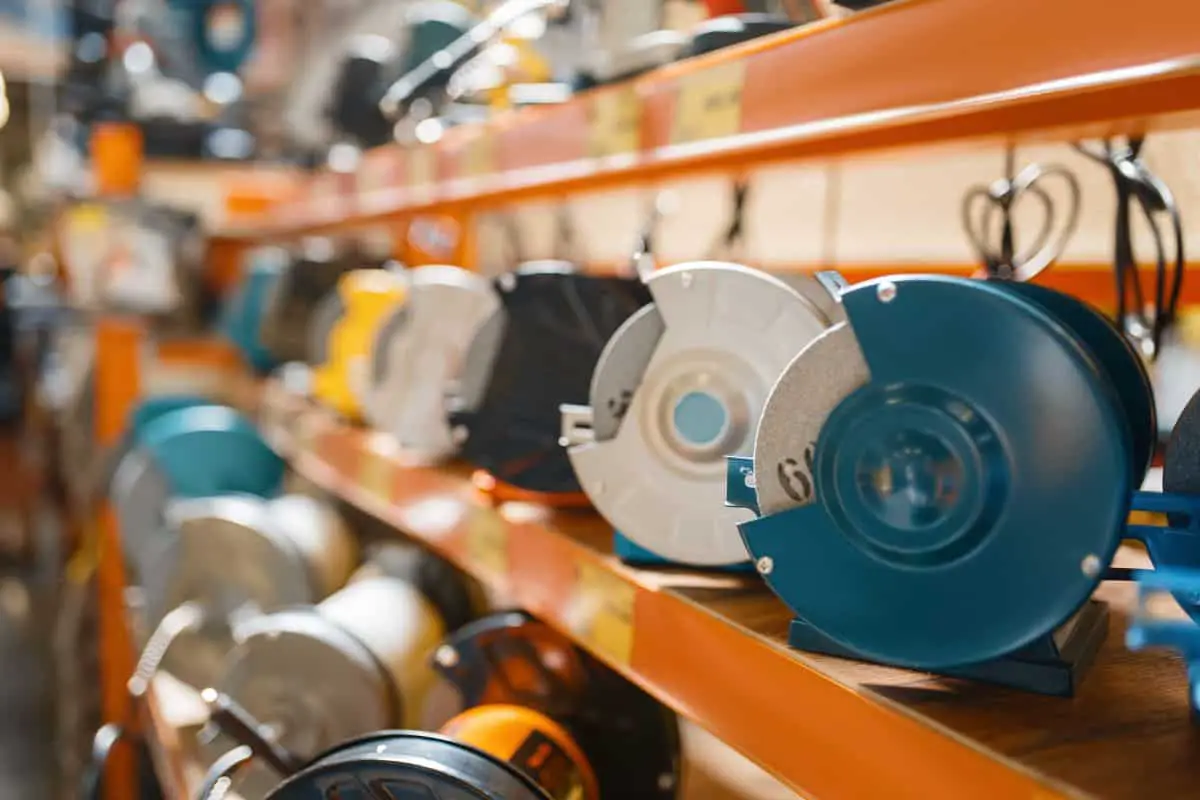Angle grinders are a versatile & essential tool that can be used for various tasks, including grinding, cutting, and polishing.
There are a few different types of angle grinders on the market, so it cannot be easy to know which one is right for you.
When it comes to selecting the right angle grinder for the job at hand, there are a few aspects that need to be kept in mind before making a final decision.
First and foremost, one must prioritize one’s own safety.
Always make sure to wear the appropriate personal protective equipment, and under no circumstances should you ever grind or cut any material in a confined place since the debris can be dangerous to breathe in.
For the sake of your safety, we strongly advise that you wear the appropriate face mask and ventilators.
This guide will help you understand the different types of angle grinders and how to use one safely and efficiently.
No matter if you are cutting, filing, or preparing to wipe a surface down, the appropriate angle grinder coupled with the appropriate technique is a tool that every tradesperson should have in their toolbelt.
This is true regardless of the task at hand. Consider the scale of the project, the environment in which you intend to use the grinder, and the primary function you require it to fulfill.
How To Use An Angle Grinder Safely
Angle Grinders are a very versatile tool that can be used for various projects. However, it’s essential to use them safely to avoid injury.
Here’s a quick walkthrough on how to use an angle grinder safely:
- Always wear appropriate safety gear when using an angle grinder. This includes eye protection, gloves, and a dust mask.
- Inspect your angle grinder before use to ensure it is in good condition. Check for any damage to the cord or body of the tool.
- Make sure that the area you are working in is well-ventilated. Angle grinders create much dust, so it’s crucial to have good ventilation to avoid inhaling it.
When using the tool, hold it firmly with both hands. Always keep your hands behind the guard.
Use the correct wheel for the material you’re working with. Make sure that the wheel is compatible with the angle grinder.
Be careful not to overheat the tool. If it starts to smoke, turn it off and let it cool down before continuing. When you’re finished, unplug the angle grinder and clean up any debris.
Angle Grinder Safety Precautions & Tips

- Use two hands to operate the grinder. One hand should grip the handle and dead-man switch (if provided), while the other hand supports the weight of the tool.
- Allow to warm up to operating speed before applying it to the job.
- Hold the grinder against the workpiece with light pressure so the disc does not ‘grab’ and kick back.
- Never bump the grinder into an object or allow the disc to collide with anything else while grinding.
- Keep the grinding disc at a 15 to 30-degree angle to the object. Ensure that the workpiece is securely held as part of a more oversized item or in a bench vice.
- When grinding, keep the work at waist height as much as possible.
- Adopt a comfortable stance with your feet apart to feel balanced, and make sure you have a clear view of the job
- Never use a grinder between your legs while sitting on the floor.
- Stop at regular intervals to rest your hands and arms.
Types Of Grinders
Angle Grinder
The most common type of angle grinder is the standard angle grinder. This grinder has a round disc for grinding, cutting, and polishing. It is a tool that can be used for a variety of tasks, big or small.
Die Grinder
Another type of angle grinder is the die grinder. This type of grinder has a square disc used for grinding and cutting. It is a more specialized tool for grinding metal or cutting tile tasks.
Cutoff Grinder
There is also a type of angle grinder called a cutoff grinder. This type of grinder has a triangular disc used to cut metal. It is a more specialized tool for tasks such as cutting pipes or metal sheets.
Bench Grinder
Grinder benches are stationary machinery typically mounted to a workbench or table through attachments and bolts.
These are equipped with two spinning abrasive wheels of varying grain sizes, and they are used for grinding down and shaping objects that need to be manufactured from scratch or mended.
When cleaning or polishing workpieces, grinding wheels can be replaced by wire brushes or buffing wheels instead of using the wheels themselves.
Detailers Grinder
Finally, there is a type of angle grinder called a detailer’s grinder.
This grinder has a small disc for detailed work, such as polishing metal or wood. It is a more specialized tool that is used for tasks that require precision.
Belt Grinder
Belt grinders are most commonly used to prepare metals that have coated abrasions. This may be done to finish surfaces, sharpen blades, remove rough edges, or remove stock.
These tools, which are very similar to belt sanders, have an abrasive coated belt that, when materials are passed over it, generates a completed surface on the object being worked on.
Wet Grinder
Wet grinders with abrasive cutting wheels are utilized for polishing and grinding stone and tile.
While the abrasive wheel is in motion, the fluid lubricates and cools the grinder, making it more efficient.
Water use helps reduce the risk of splitting or destroying the cutting tool or the workpiece, another advantage of using water.
Water is utilized by various tools, including angle grinders, tile saws, and others used for woodworking and sharpening blades.
Most hand-held devices have an abrasive disc to obtain a smooth finish.
Floor Grinder
Floor grinders are the most effective tool for jobs that cover a large area, whether commercial or household in form. These abrasive tools can clean tile, grout, concrete surfaces, or wood.
These abrasive tools can clean tile, grout, concrete surfaces, or wood. Floor grinders are machines that remove surface debris by utilizing horizontally revolving discs.
Their size is comparable to that of a vacuum cleaner.
Conclusion
The beginner’s guide to angle grinders that we covered today has ended. Thanks for following along.
As we have discovered, there is a wide variety of choices available to individuals when it comes time to select the appropriate angel grinder for the task at hand.
Some have strengths and weaknesses that others do not; because of this, we emphasize how important it is to accurately assess the task at hand and choose the appropriate instrument for the position, which in this case is a grinder.
When cutting or grinding any material, no matter where you are, you should always make sure to wear the appropriate protective gear.
This has been determined to be the most significant takeaway from today’s discussion.
To avoid breathing in debris from the material you are grinding or cutting, it is essential to have adequate air movement and ventilation.
The majority of these particles can be damaging to your health.
